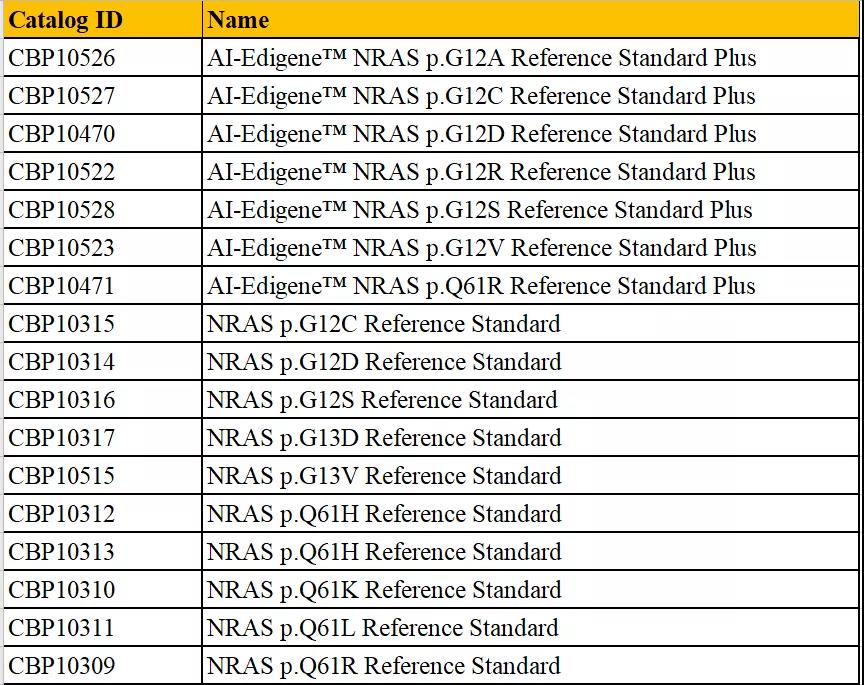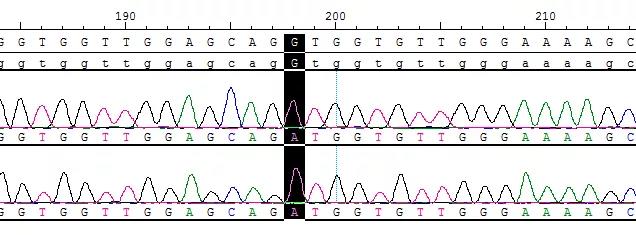NRAS diagnostic standards
Background
Ras GTPase mutations exist in about 20-30% of human tumors. Ras has always been difficult to target, and it was even called a "drug-free target" target; as of now, no direct inhibitors of NRAS with high selectivity have been reported. Recently, it has been reported in the literature that serine/threonine protein kinase 19 can regulate the activity of NRAS, and has the potential to be a target for regulating NRAS activity for drug development.
In normal cells, RAS is activated downstream of membrane growth factor receptors (such as the EGFR family). This family includes EGFR itself and the related ERBB receptor (called HER in humans). RAS is a small GTPase responsible for signal switching, which switches between the active state of GTP binding and the inactive state of GDP binding. RAS proteins have weak intrinsic GTP hydrolysis and nucleotide exchange activities. Their cell signal state comes from the activation of guanine exchange factors (GEFs) to catalyze the loading of GTP; GTP activated protein (GAP) catalyzes its inactivation and accelerates Hydrolysis of GTP.
In the GTP-bound state, RAS directly interacts with several effector proteins including mitogen-activated protein kinase (MAPK) and phosphatidylinositol 3-kinase (PI3K) and activates downstream signaling pathways. Mutations in RAS can disrupt the guanine exchange cycle, and GAP cannot catalyze the hydrolysis of GTP, causing RAS to be locked in the active GTP binding state, thereby continuously activating downstream signaling pathways and leading to tumor cell growth.
RAS gene changes are mainly point mutations and gene amplifications. Point mutations are more common in codons 11, 12, 13, 59, and 61. Among them, mutations in codon 12 are the most common in Nras, and mutations in Nras mostly occur in codons 61. a. The amino acids encoded by these codons are the action sites of Ras protein and GTPase activated protein (GAP). Mutations cause Ras-GTP to be continuously activated, causing malignant cell proliferation and metastasis.
The NRAS gene is responsible for encoding and producing a protein called N-Ras. N-Ras protein is closely related to cell proliferation by participating in the RAS-RAF-MEK-ERK pathway, regulating gene transcription activities and cell cycle.
NRAS mutation
NRAS gene is an oncogene, and pathogenic gene mutation is one of the causes of cancer. When a pathogenic mutation occurs in the NRAS gene, the N-Ras protein encoded by it will be continuously activated, leading to uncontrolled cell proliferation and tumor formation.
RAS mutations are gene drivers of many cancer types, including colorectal cancer (CRC), pancreatic ductal adenocarcinoma (PDAC), lung adenocarcinoma (LUAD), non-small cell lung cancer (NSCLC), melanoma, and certain hematological cancers Certain subtypes of. Although these tumor types are driven by RAS mutations, the subtype (KRAS, NRAS, or HRAS), codons, and RAS mutation frequency all vary by tissue type.
NRAS diagnostic standards
In response to development and research needs, Cobioer Biosciences has launched NRAS diagnostic standard products. Welcome to inquire.


Part of product data
1.AI-Edigene™ NRAS p.G12A Reference Standard Plus CBP10526


2. AI-Edigene™ NRAS p.G12C Reference Standard Plus CBP10527


3.AI-Edigene™ NRAS p.G12D Reference Standard Plus CBP10470


4. AI-Edigene™ NRAS p.G12R Reference Standard Plus CBP10522


5.AI-Edigene™ NRAS p.G12S Reference Standard Plus CBP10528


If you want to know more details, you can contact us at tech@cobioer.com, thank you

